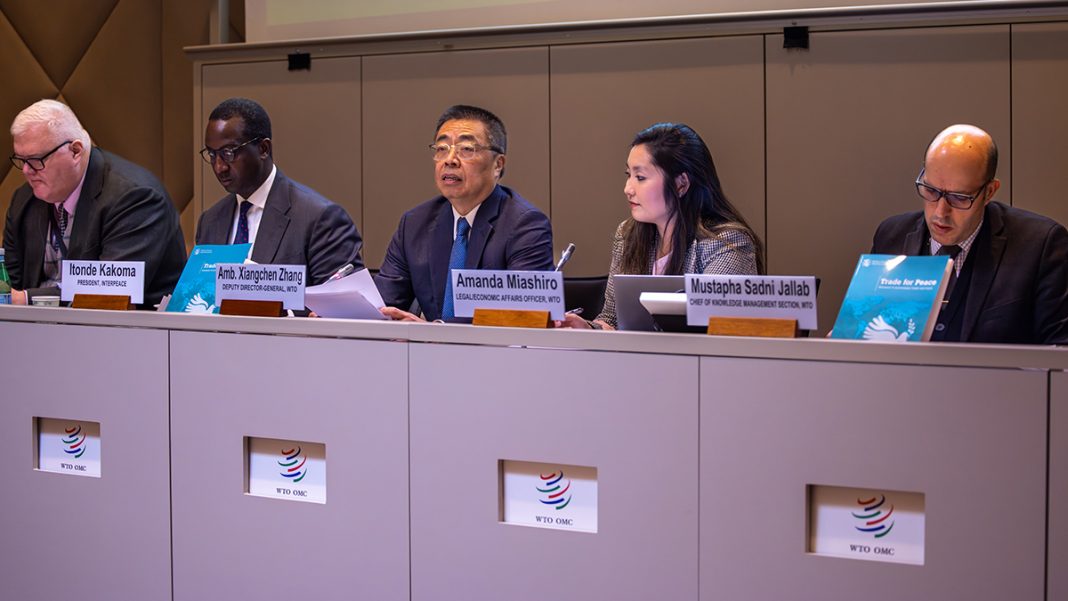The World Trade Organization (WTO) marked a significant milestone on February 20th with the launch of its inaugural “Trade for Peace” publication, “Pathways to Sustainable Trade and Peace,” during the fourth annual Trade for Peace Week. This pivotal work delves into the intricate relationship between trade and peace, underscoring trade’s potential to foster stability, particularly in fragile and conflict-affected states (FCS).
This comprehensive publication, featuring 16 chapters authored by 31 experts from nine prominent institutions—including the Institute for Economics and Peace (IEP), the International Labour Organization (ILO), the International Monetary Fund (IMF), and the United Nations Development Programme (UNDP)—aims to equip policymakers, academics, and practitioners with critical insights.
“Trade is an indispensable part of building the secure, sustainable, and inclusive world we want and need,” emphasized WTO Director-General Ngozi Okonjo-Iweala in the publication’s foreword. She called for enhanced collaboration within the trade community and with other partners to leverage trade for peace, particularly in FCS, and to advance a 21st-century vision of Trade for Peace.
WTO Deputy Director-General Xiangchen Zhang, in his opening remarks, highlighted the publication’s significance in addressing the knowledge gap on the trade-peace nexus. He noted that it’s the WTO’s first publication to provide insights on how trade and peace interact and how stakeholders can utilize trade to promote economic development and stability.
A panel discussion, moderated by Amanda Miashiro, featured co-editor Mustapha Sadni Jallab and authors Alan W. Wolff, Itonde Kakoma, Franck Bousquet, Barbara Ramos, and Serge Stroobants. The discussion addressed the increasing global fragility, the role of legal frameworks in leveraging trade for peace, and the need to build the capacity of actors in FCS.
Key takeaways from the discussion included:
- Escalating Global Fragility: Peace levels are at historic lows, underscoring the urgency of addressing conflict drivers.
- Trade as a Peace Driver: Legal frameworks and strategic conditions are essential for trade to effectively promote peace and stability.
- Capacity Building: Enhancing the capacity of actors in FCS is critical for conflict-sensitive and peace-promoting actions.
- Economic Impact of Violence: The IEP’s data, showing a US$ 19.1 trillion global economic impact of violence in 2023, highlighted the need for trade to mitigate this impact.
- Multilateral Trading System and Peace: The discussion emphasized the historical link between peace and the multilateral trading system and the G7+ WTO Group’s role in advancing the Trade for Peace agenda.
The event also marked the unveiling of the Trade for Peace Research and Knowledge Database, a central hub for research and resources on the trade-peace nexus, designed to support evidence-based policy development.
The full publication and event recording are available online, offering valuable resources for those seeking to understand and harness the power of trade for peace.




